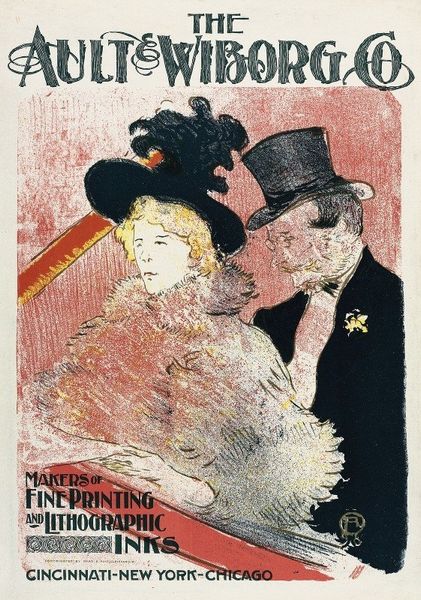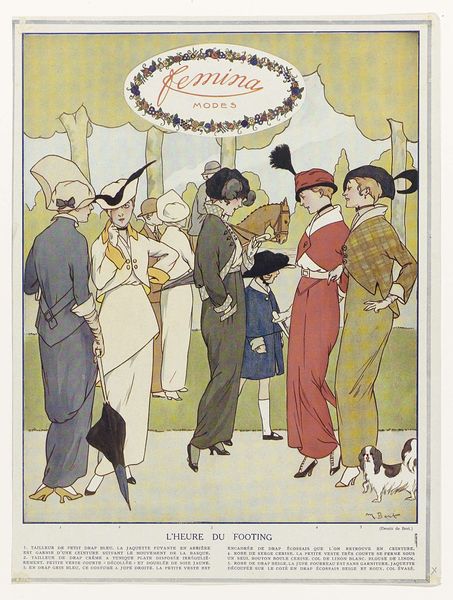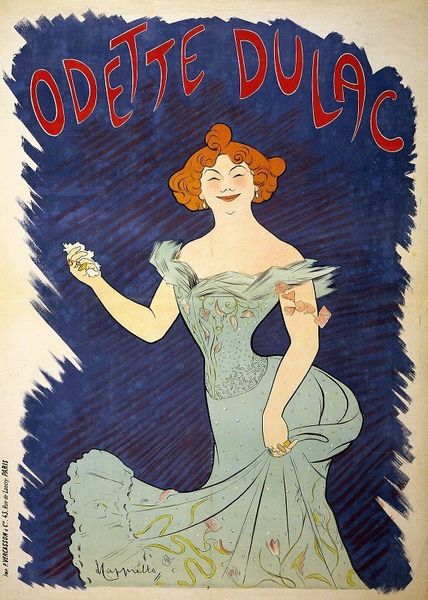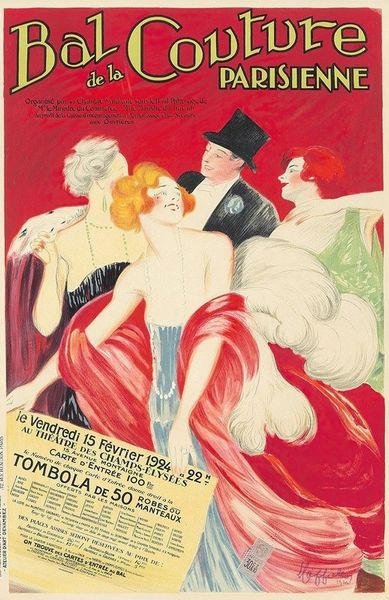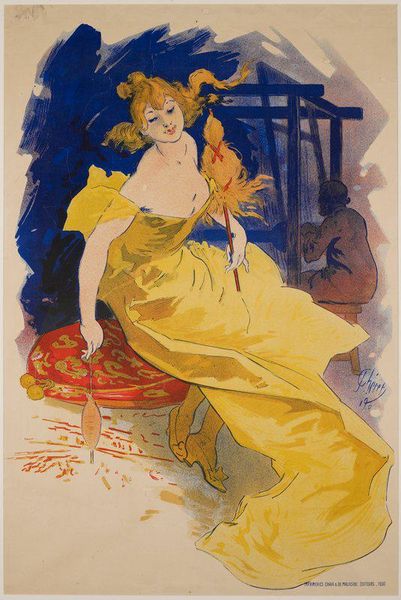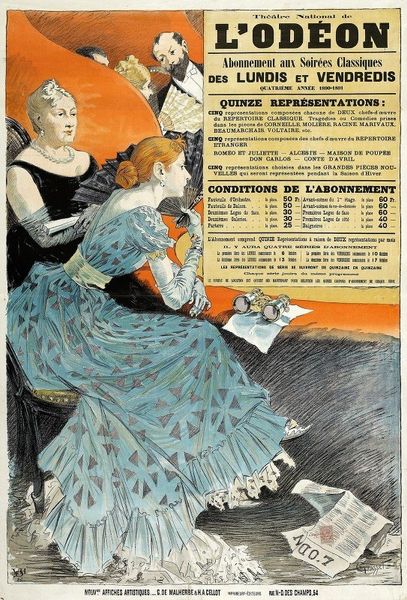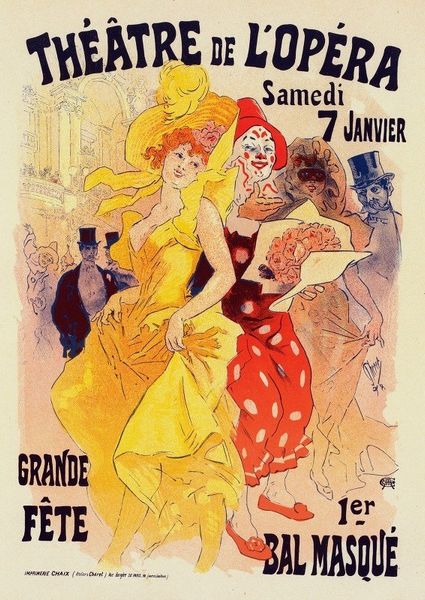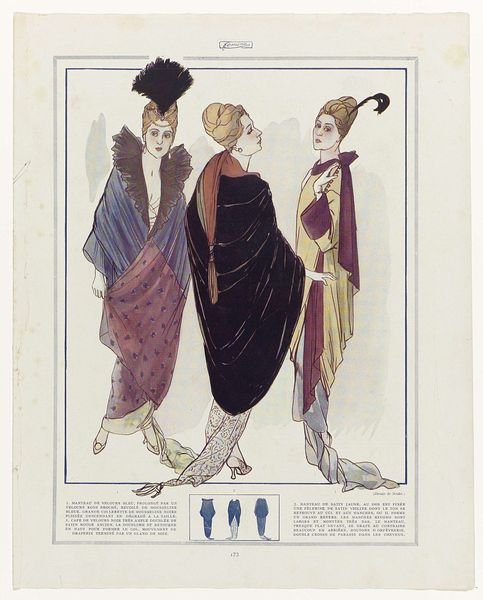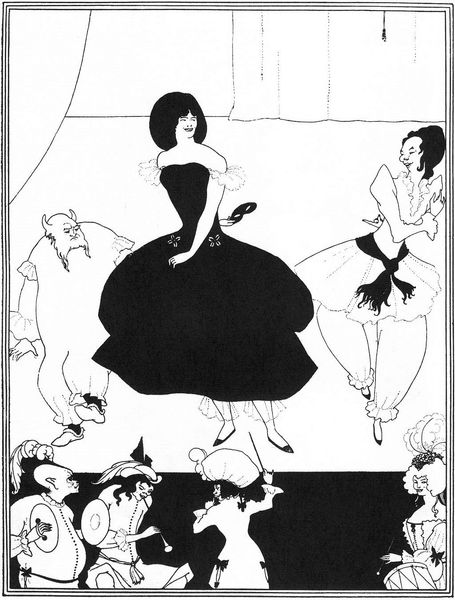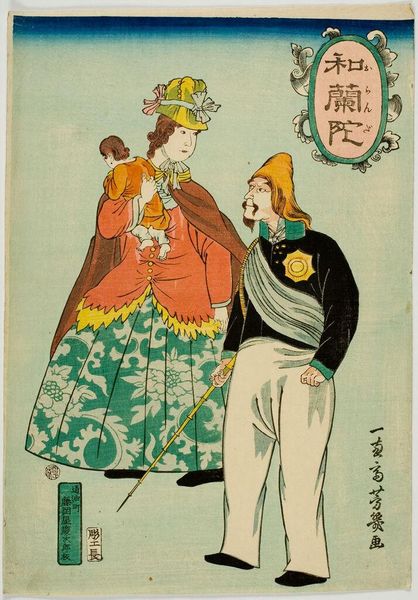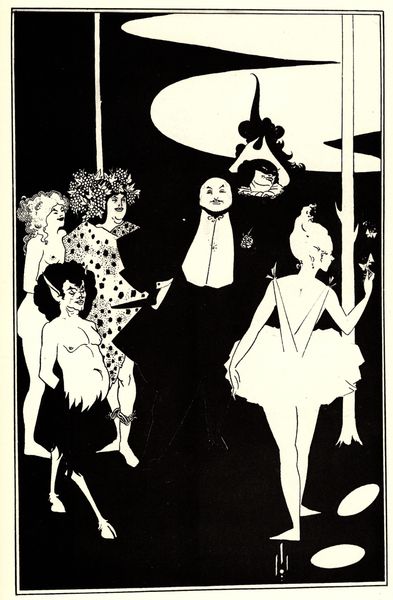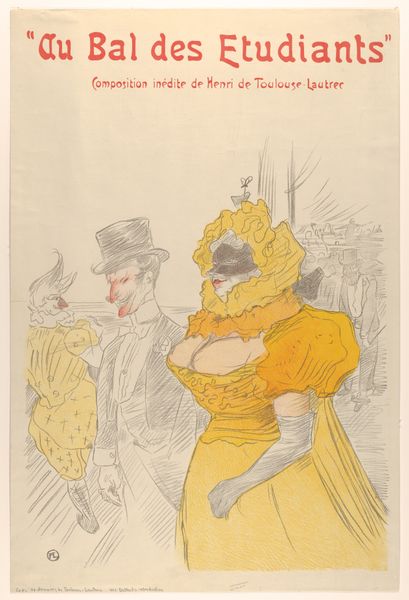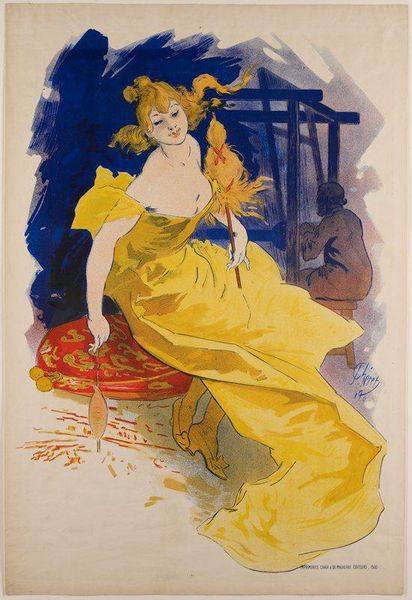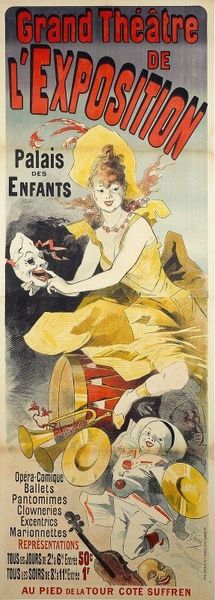
Copyright: Public Domain: Artvee
Editor: This is a lithograph poster entitled "Ault and Wiborg, Ad. 042," made sometime between 1890 and 1913 by Jules Chéret. I’m immediately drawn to the figures – they seem so full of life and energy, especially with those bright colors! How would you interpret the significance of these figures, particularly the woman in yellow and the clown? Curator: Well, it’s important to understand Chéret's role in shaping visual culture. He really elevated advertising to an art form. The woman in yellow embodies the Belle Époque: a symbol of beauty, freedom, and joy that was very new at that time. Think of her as the ‘new woman’ – confident and liberated. Now, about the clown… Where do clowns usually appear? Editor: Entertainment, circuses, theater... Curator: Exactly. They act as a sort of cultural shorthand. A reminder that advertisements – even for something like printing inks – are inherently theatrical, a performance designed to capture our attention. Notice how all figures draw attention to the printing example that they all hold. Does this link to ink surprise you? Editor: That is a fresh perspective! I never really looked at advertising as such a multifaceted art before, carrying this many layers of symbolic language and meaning. Curator: Right, the advertisement doesn't exist in a vacuum, right? Chéret masterfully blended commercial interests with artistic expression and cultural context. This allowed symbols, familiar to anyone walking around at the time, to deliver its core message. Editor: I see it now. So, these images work together, giving not only name recognition, but also reflecting aspiration and progress of their time. It’s not just about ink anymore! Thank you! Curator: Precisely! Thinking about this poster through the lens of visual and cultural symbolism expands our understanding, wouldn't you say?
Comments
No comments
Be the first to comment and join the conversation on the ultimate creative platform.
